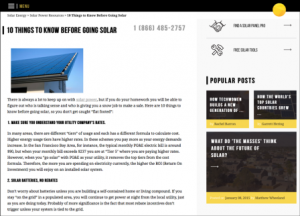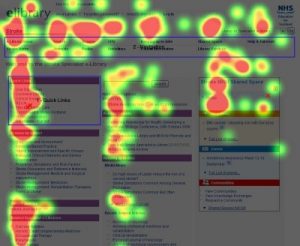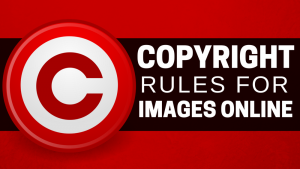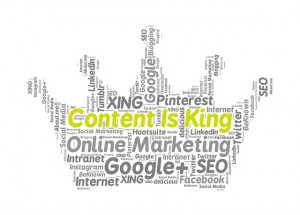Many naive entrepreneurs think that all web traffic is created equal. They think that marketing is just about advertising. Consequently, they fail to correctly target traffic and direct all online traffic to an offer page to buy their product or service before the prospect has had time to establish a relationship with the business. In today’s market, this strategy often meets with failure as buyers no longer respond to a sales pitch like they did in the past. Today a customer requires more of an experience before they are willing to open their wallet and buy from you. You need to be able to communicate with the customer in a series of communications to build trust as you move them through your value ladder.
A typical value ladder often starts with bait (something you offer for free). It is key that you understand that you are not trying to sell the customer anything at this stage. You simply want to get them to enter your communications funnel. Once in the funnel, you can continue to communicate with them until they are ready to buy. Thereafter, since they are in your communications funnel, you can upsell them new and more expensive products or services as your trust factor with the customer grows and they move up your value ladder.
In order to get your prospects into your communication funnel, you will need the means to communicate with them regularly. That means you will need their email address. Few prospects are willing to give you their email address right off the bat and that is where understanding the source of your website traffic comes into play. Based on the source of the web traffic, you will need to employ a different process to obtain their email address so they can begin their journey through your value ladder.
Three Kinds of Web Traffic
It is important to understand that not all website traffic is created equal. There are essentially 3 types of traffic:
- Traffic You Own
- Traffic You Rent
- Traffic You Attract
Web Traffic You Own
This is ultimately where you want all traffic to reside in the end. When you own the web traffic, it costs you nothing to reach out to them. You can communicate with them when you want to and you control the message. Examples of website traffic that you own are your subscribers, followers, fans, and best of all, contacts in your email list. Once you own the web traffic, you can make them different offers and drive them through your communications funnel.
When you own the traffic, you have the opportunity to build up a rapport through a communication process to find their motivation and guide them toward ever more valuable sales.
Web Traffic You Rent
When you rent web traffic, you have temporary control of the contact to tell them where to go. Essentially when you rent traffic, you are purchasing access to a prospect through some form of paid advertising. Google, Facebook, etc. own the website traffic but you can control it if you are willing to rent access to them for a fee. As indicated earlier, the naive entrepreneur uses paid advertising to drive the web traffic directly to a sales page. At this point in the relationship, the traffic barely knows you and here you are asking them to already buy something from you.
This is like a guy going into a bar and asking every woman he sees if they want to get married. Your chances are slim to none that any prospect will bite on such a proposal. Just like any relationship, the prospect has to know you exist, grow to like you, and then learn that you are trustworthy before they will buy. When it comes to website traffic that you rent, savvy entrepreneurs do not squander the opportunity trying to sell to the prospect right out of the gate and risk losing them. Instead, they understand that the goal is to convert them into web traffic that they own.
Therefore, savvy entrepreneurs know that when they use paid advertising, they need to send the prospect to a squeeze page before trying to sell to them. A squeeze page is a simple page with no navigation where you offer something of value, most often for free, in exchange for their name and email. As bait, perhaps you can offer the prospect a tool, a fact sheet, a paper, an eBook, or something. That way the prospect is willing to become traffic that you own by providing you with their email address in exchange for your bait.
The problem with traffic that you rent is that it costs you money to rent it. The more of it you want, the more you have to be willing to pay for it.
Web Traffic You Attract
The third type of web traffic is traffic you attract. You do not have direct control over the message or where the traffic will land. Essentially, you have to create content that acts like gravity to attract traffic.
Website Traffic that comes to your site via a search (SEO), social media (Facebook, Twitter, etc.), guest blog, YouTube video, or other similar source are all examples of traffic that you attract. The web traffic you attract can land anywhere on your site, so the savvy entrepreneur will always include some way to convert the website traffic you attracted to become traffic that you own at potentially every point of entry.
All the pages on your site where traffic that you attract are likely to land, such as blogs, need to include some form of bait. After all, the goal with web traffic that you attract, like with traffic that you rent, is to convert the website traffic into traffic that you own. However, since you can’t control where the traffic lands on your site like you can when you rent the web traffic, your goal should be to make a good impression and dangle some attractive bait to drive them to where you want them to go.
Understanding that web traffic comes in 3 different flavors and recognizing that your ultimate goal is to convert all traffic into website traffic that you own so they can enter your communication funnel is paramount to a small business’s online marketing success.
Let’s get more concrete and explore each type of web traffic and the marketing channels they use.
9 Marketing Channels to Attract Prospects to Your Brand
Many business owners are confused with the vocabulary of business. One particular sticky point is related to “marketing channels” and in particular, how a company can create brand awareness with a prospect.
Since I always find it helpful to review a list of options, today I’d like to focus on marketing channels that will help businesses attract eyeballs in a quest to create brand awareness for their business. In subsequent posts, we’ll look at marketing channels that a business can rent and what to do when they own the contacts information. When it comes to marketing channels designed to attract prospects to a company’s brand, they are performing what most people refer to as content marketing. Essentially, the business is creating content that prospects will find via some form of a search. Search Engine Optimization (SEO) therefore essentially creates a kind of gravity to attract prospects to a business.
I recommend that when it comes to anything in the “attract” category of content marketing, the business does not try to sell directly but rather focus on demonstrating its expertise and/or market leadership in their specific industry. Here is the list of content marketing channels that attract eyeballs.
Blogs
Blogs and their video equivalent Vlogs are generally platforms to establish your credibility and to build trust with the prospect.
Articles
Many online and paper-based magazines will accept articles from guest writers. This is a great way to place your content on the publication’s platform and get access to their readers for free. Most allow you to include a bio with a backlink to your site. Here is just one list of publications that either pay you to write an article or will accept guest articles. There are of course many others so this is just a partial list.
Press Release
A press release can come in the form of an official statement issued to a PR site like PRLof.org, or it can be a stunt that will garner media attention.
Videos
YouTube is the second biggest search engine after Google. In addition to YouTube, sites like Vimeo and Facebook also host videos. When people are searching on a video site, they are often looking for a demonstration, review, or some form of a how-to video. Videos are a great place to demonstrate your expertise and link the content to a real person they can see.
Seminars/Webinars
In-person seminars or training courses or their online equivalent webinars are a great way to educate your audience and to build up network deposits.
Website
When someone is considering doing business with you, they will often visit your website to get to know your business better. While you can never guarantee where on the site they will land, it is always a good idea to include some form of Call To Action on each page so they can enter your sales funnel.
Chatbots
Artificial Intelligence (AI) has given rise to chatbots that appear to be human but are in fact robots responding to your queries. Often is it hard for the prospect to know if they actually communicating with an AI-enabled website or a real person on a help desk. Either way, they deliver quick and meaningful responses that meet the customer’s needs and act to enhance the business’s customer service.
Review Sites
Sites like Google Business Profile, Yelp, Foursquare, and even Facebook offer the opportunity to your customers to rate your business. Ratings and testimonials from existing customers can go a long way towards convincing potential customers that you have the goods. This channel does not include paid reviews.
Social Media
The big gorilla these days is, of course, social media. When it comes to social media, as part of the attraction category, we are talking about the bi-directional nature of social media. By communicating with your prospects, you help to build trust and help prove you are human and not just a company. This channel also includes communication via forums and messages boards that engage in bi-directional communications such as platforms like Reddit, Facebook, and LinkedIn groups.
Beacons
When you have a mobile device with Bluetooth enabled and pass roughly within the range of a football field of a beacon, it can interact with a mobile app installed on the phone. Retailers can use the beacon and the app installed on the prospect’s phone to encourage the prospect to share their location with friends or to make them a special offer. This channel also includes Near Field Communications (NFC).
12 Powerful Marketing Channels That Rent You Access to Prospects
When you rent access to an audience, essentially, you have to pay someone to get access to their audience. When you rent access to their audience, you do not own the contact and are often interrupting the prospect to deliver your message. Depending on the marketing channel, you as the advertiser are sometimes viewed as an annoyance since you are interrupting them from their chosen activity. That said, many online organizations that rent you access to their audience are good at determining the relevance of your product or service to their desires, so the hope is that the advertisement comes as a welcome message as if you were reading their mind.
When it comes to using one of the online channels you can rent access to, it is best to send the prospect to a squeeze page where you can exchange some free information in exchange for their content information. Once you have captured the prospect’s contact information, you can use one of your owned channels to communicate with them for free going forward.
Social Media Ads
Nearly every social media platform captures information about its users and then offers businesses the ability to target ads to them. Ads can be billed based on just the number of impressions (displaying your brand message only to a prospect), or based on click-throughs to a home page, landing page, or squeeze page where billing occurs only when the prospect clicks on an ad.
Print Ads
Magazines tend to be more targeted based on their content. Bow Hunter magazine by its nature attracts bow hunters but are national in scope. Newspapers, on the other hand, are local in scope but are not well targeted to a particular buyer. This channel also includes inserts, which are blow-in cards, which are added to magazines, newspapers, and other publications and can be customized based on geography.
Display Ads
Everything from yard signs to highway billboards constitutes what I will call display ads mostly placed along roadways. When this is the case, the message needs to be very brief as drivers have little time to absorb the message as they drive by. Display ads can work better when the driver can digest the ad such as when their vehicle is stopped at a street light or waiting at a bus stop.
Product Placement
When it comes to broadcast media a subtler form of paid promotion comes in the form of product placements. The movie ET did wonders for Skittles sales, and the movie The Italian Job helped elevate the Mini Cooper brand. Generally, product placements are reserved for larger brands but small business owners often can provide vloggers with their products to use as a way to get their product seen by a much wider audience.
Kiosk/Events
A mobile kiosk or a table at an expo or similar type of event can expose your brand to a new audience. To make the best use of expos and events, be sure to have promotional items as giveaways.
Sponsorships
Many sports teams receive support through the use of sponsorships. Be it a little league baseball team by a local retailer or NASCAR, sponsorships by a national brand, sponsorships get your name in front of the events fans.
Commission Sites
Online stores like Amazon, training platforms like Udemy, and even multisided platforms like eBay all create a kind of gravity that attracts an audience with a purpose. In exchange for a commission, these sites will give you access to their audience to sell to. In addition to online platforms, some retail stores and consignment shops will sell your product in exchange for a percentage of the sale.
Broadcast Media
Network TV, cable channels, streaming video, and radio all use their content to attract a particular audience and then rent you access to them via commercials. Programming is designed to attract a kind of demographic. For example, local newscasts attract an undifferentiated but localized audience. Hell’s kitchen, by contrast, draws a national audience that likes to cook.
Network TV
Network TV stations like CBS, ABC, NBC, and FOX have a mix of national and local advertisers. While the majority of ads are for national brands, most programming stations reserve a few spots for local advertisers. Some programs produced locally tend to reserve spots exclusively for local business, for example, the morning or late-night news. However, the content does a poor job at differentiating an audience except by location.
Cable
Cable channels cater to national audiences only but tend to be a bit more focused based on viewer interest for the content they provide. For example, Disney caters to a young audience or families with younger children while The Blaze caters to a conservative-leaning audience. While network TV attracts an audience through individual programs the entire lineup of programming at cable channels attracts a specific type of audience and specific programs can then further refine that audience even further. For example, the outdoor channel attracts the outdoor enthusiast so advertising a 4×4 vehicle would make sense for any program. However, a fishing show attracts a more specific type of audience that enjoys fishing, so an ad for a boat makes even more sense.
Streaming
Streaming video sites like YouTube cater to anyone with an internet connection and often include pre-roll ads before displaying your selected content. While streaming video sites do not generally have commercials, a specific channel such as one that caters to dual-sport motorcycle riders will often do paid product reviews of equipment and apparel.
Radio
Radio in the AM and FM bands cater to a local audience based on the power of their signal. Internet stations by contract, like, IHeartRadio extends the audience to all points of the globe with internet access.
Direct Mail
Many companies like Data axle allow you to upload your message and select an audience and they do the rest. Others will sell you a list of names and addresses that you can add to your owned category of channels. Lists are customizable based on demographic information. However, the lists you buy are not prospects that have opted-in to receive content from you. Therefore, your content is often considered junk mail. When you buy a list, technically, the contact is now owned by you, but since it is address-based, it will cost you postage each time you conduct a mailing.
Telemarketing
Similar to direct mail, telemarketing services develop lists based on demographics. You can either buy the list and make cold calls yourself or hire a firm to do it for you.
Banner
Many mobile apps and online line tools have a freemium version that is supported by banner ads or pop-ups.
Affiliate
Sites like Commission Junction and Rakuten allow you to connect with affiliates to whom you are willing to pay a commission to in exchange for them marketing your product to their audience. Many affiliates exist to review your product and convey its virtues to their audience and include a call to action with a special link to send them to your site to make the purchase. These channels include paying influencers and celebrities to promote your product.
5 Marketing Channels That Make the Most of Contacts You Own
First, a business employs marketing channels that will attract prospects to their business and the marketing channels where they rent access to someone else’s audience so that they ultimately become a prospect that the business now owns. In this category, because the business now owns the prospect’s contact information, they can continue to reach out to them with content and offers when and where they choose.
This channel is one of the most popularly owned category channels since it costs virtually nothing to drip emails to the prospect continuously. As we discussed in Sales Acceleration Emails, not all emails will trigger an action in the prospect. You can appeal to one of the four buyer psychologies using a series of emails. In general, emails experience about a 25% open rate.
Mobile
When it comes to a channel that receives the best open rates, text messages, sometimes also called push notifications are the king with an incredibly high, 99%, open rate. Often companies will include an opt-in link such as a QR code the prospect can scan with a smartphone to accept an offer or discount and then the business will use the mobile number captured to later send text/push messages to announce special deals.
Fans/Followers
Most social media sites allow a person to follow a particular business or person. In this way, once the prospect opts in, the business can post updates that its fans or followers can see.
Subscribers
Once a prospect becomes a subscriber, they gain access to your content that others may not have access. The content provides information the prospect wants access to, but the content may contain occasional calls to action to drive the prospect up your value ladder with special offers.
Catalog
Many retailers capture a customer’s physical and email address when they make their first purchase or offer a loyalty program to obtain the information. Once in the database, the business can send the customer either an online or printed catalog. Catalogs allow the customer to make phone or internet orders, and customers are often assigned a unique customer number to make the ordering process more manageable.
Digital & Social Articles on Business 2 Community(54)
Report Post





